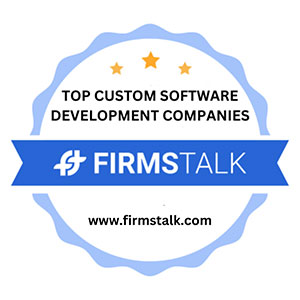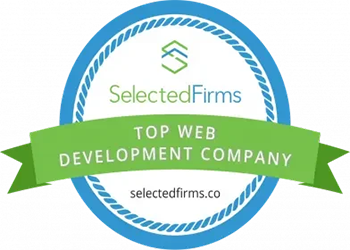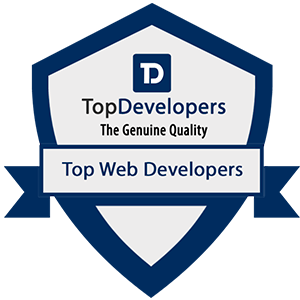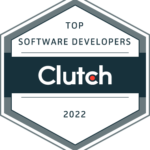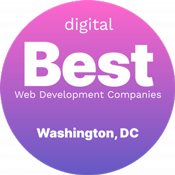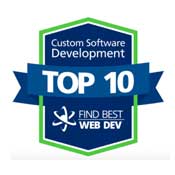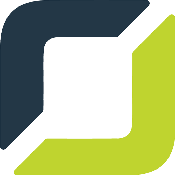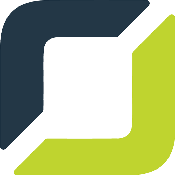AI Agent Development
Hierarchical Agents
Tell us about your project.
Hierarchical AI agents introduce structured coordination to manage sophisticated goals.
Why Work With Orases?By delegating specialized sub-tasks across tiers of supervisor and worker agents, they enable scalable orchestration of complex workflows. This targeted division of labor drives efficiency gains across industries from autonomous transport to supply chain optimization.
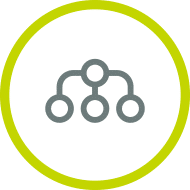
Types Of Custom AI Agents We Develop
From simple task automation to complex decision-making systems, we develop AI agents that match your specific operational needs and growth objectives.
Every business challenge requires a specific type of AI agent to deliver optimal results. We offer a complete spectrum of AI agent architectures, each designed to address distinct operational needs and objectives.
Autonomous Agents
Self-directed AI systems that independently perform complex tasks, make decisions, and adapt to changing conditions without human intervention, perfect for automated process management and system optimization.
Deliberative Agents
Strategic decision-making agents that analyze multiple factors and potential outcomes before taking action, ideal for complex business planning and resource allocation.
Goal Based Agents
Objective-driven AI systems that determine the best path to achieve specific outcomes, excellent for optimizing operations and achieving measurable business targets.
Interactive Agents
Engagement-focused AI that provides natural, context-aware responses to user inputs, ideal for customer service and user experience enhancement.
Learning Agents
Adaptive AI systems that continuously improve performance through experience and data analysis, perfect for evolving business environments.
Logical Agents
Rule-based systems that make decisions through systematic reasoning and logic, ideal for compliance, quality control, and consistent decision-making.
Model Based Reflex Agents
Context-aware systems that combine current inputs with historical data to make informed decisions, perfect for dynamic operational environments.
Multi Agent Systems
Collaborative AI networks that work together to solve complex problems, ideal for large-scale operations requiring coordinated decision-making.
Planning Agents
Strategic AI systems that create and optimize step-by-step plans to achieve specific goals, perfect for project management and resource allocation.
Simple Reflex Agents
Efficient rule-based systems that provide immediate responses to specific inputs, ideal for basic automation and routine task management.
Utility Based Agents
Decision-making systems that evaluate options based on value and benefit, perfect for optimizing resource allocation and risk management.
Vertical AI Agents
Specialized AI systems focused on specific industry domains, delivering deep expertise and targeted solutions for sector-specific challenges.
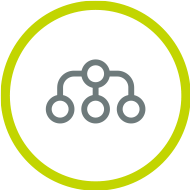
Where Hierarchical AI Agents Deliver Maximum Value
Hierarchical AI structures shine in orchestrating sophisticated processes that require both high-level oversight and ground-level precision. By combining top-down goal-setting with bottom-up task execution, they enhance output quality while minimizing errors. Below are important areas that are seeing widespread hierarchical AI adoption.
AI-Driven Robotics & Automation
In robotics, hierarchical agents enable both high-level operational planning as well as efficient coordination of sensory capabilities and movement functions at the task execution level. For example, manager agents can determine optimal schedules while specialized controller agents handle dynamic calibration, motion planning, and collision avoidance for automated material handling.
Autonomous Vehicles & Navigation Systems
Self-driving vehicles utilize hierarchical AI to evaluate complex route options for optimality while concurrently managing dynamic real-time duties such as pedestrian detection, traffic pattern recognition, and micro-adjustments to steering, acceleration, and braking depending on environmental stimuli. Combined big picture and detailed awareness facilitate safe and responsive autonomous operation.
Smart Manufacturing & Process Optimization
In intelligent manufacturing facilities, cloud-based digital twin agents are responsible for optimizing production schedules across the plant while on-premise agent hierarchies guide individual machines in adapting assembly plans, maximizing uptime via predictive maintenance, and adjusting quality assurance protocols as needed to boost yields, taking into account shifting constraints and competitive priorities.
Multi-Agent AI Coordination
For large-scale multi-agent AI systems working towards shared goals, hierarchical coordination networks enhance efficient division of labor through task decomposition and assignment based on different agents’ strengths while also avoiding redundancy, facilitating information exchange, and even allowing agents to negotiate responsibilities among themselves using agreed coordination protocols.
AI for Large-Scale Data Processing
Hierarchical AI computing architectures enable leveraging vast distributed resources for accelerated big data analytics by designating high-level aggregator agents to determine optimal data subset allocation strategies that maximize parallelized processing. Lower-level data node managers then distribute incoming subsets amongst local workloads and subsequently merge individually processed results to return condensed aggregate insights back to the top-tier overseer agent.
AI-Enhanced Cybersecurity & Threat Detection
Advanced cyber-defense suites incorporate hierarchical AI structures spanning chief security officer agents evaluating attack surface risk profiles while networking monitoring systems detect traffic anomalies. Local host agents may scan memory integrity and sub-agents can trace code execution paths searching for evidence of advanced persistent threat footprints across hardware infrastructure according to adaptive, layered protection policies.
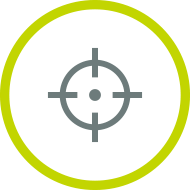
Why Organizations Are Investing In Hierarchical AI Agents
Beyond operational coordination, hierarchical AI confers additional advantages driving adoption across industries:
Structured & Scalable Decision-Making
By codifying cross-functional leadership and governance policies into AI systems, hierarchical agents enable organizational policy setting, strategic objective hierarchies, and structured choices for improved decisions. This facilitates company-wide alignment.
Efficient Resource Allocation & Optimization
Hierarchical systems allow streamlined allocation and balancing of computational resources, data access needs, asset utilization schedules, and more to prevent bottlenecks. This ensures workload efficiencies across units.
Modular & Reusable AI Frameworks
Well-designed hierarchies foster reusable modules or sub-agents that can be repurposed across applications, accelerating future development. Existing components also enable faster prototyping.
Adaptive Learning & Continuous Improvement
When embedded within hierarchical architectures, machine learning techniques help systems dynamically adapt to changing environments for increasing process optimization over time. This empowers continuous incremental improvements.
Get a Free Technical Consultation and Quote for AI Hierarchical Agents
To investigate integrating hierarchical AI capabilities optimized for your unique operational needs and objectives, leverage Orases’ full-stack AI talent and technology leadership. Contact us today for a free consultation and custom quote personalized your use case specifications.
Contact Us Today
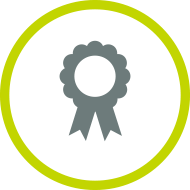
Awards & Recognitions
Proof our AI agents continue to excel.
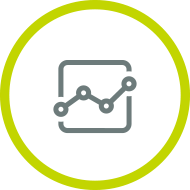
A Look At Our AI Agent Development Process
How we work, from start to finish.
Orases has created a methodical process to bring you the AI agent that best fits your organizational needs.
Requirement Analysis
We conduct a comprehensive evaluation of your organization’s needs, technical infrastructure, and AI objectives. This initial phase determines the optimal AI agent architecture while identifying key integration points and performance requirements.
Business Goal Definition
We work closely with stakeholders to identify specific objectives and success metrics for your AI agent.
Technical Assessment
Our team evaluates your current infrastructure and integration requirements.
Scope Definition
We create a detailed project roadmap outlining deliverables, timelines, and resource requirements.
Data Collection & Prep
We assess and organize your data sources, ensuring quality and consistency for AI training. This stage establishes the foundation for accurate model development while maintaining security and compliance standards.
Data Source Identification
We map all relevant data sources needed for your AI agent’s functionality.
Quality Assessment
Our team analyzes data quality and implements necessary cleaning procedures.
Standardization Protocol
We establish consistent data formats and structures for optimal AI processing.
Model Selection & Training
We select and customize AI models based on your specific use cases and performance requirements. This phase focuses on optimizing model accuracy and efficiency through iterative training and validation processes.
Architecture Design
We select the most appropriate AI models and architectures for your specific needs.
Training Strategy
Our team develops a comprehensive training approach using your prepared datasets.
Performance Benchmarking
We establish clear metrics to measure model performance and accuracy.
Development & Integration
We build and integrate AI agents into your existing systems using proven architectures and frameworks. This stage ensures seamless operation while maintaining security and scalability across your infrastructure.
Core Development
Custom development of the AI agent using industry-best practices and scalable architecture.
System Integration
Seamless connection with existing infrastructure and systems.
Interface Development
Intuitive interfaces designed for optimal user interaction with the AI agent.
Testing & Validation
We rigorously test AI agents across multiple scenarios to ensure reliability and accuracy. This phase validates performance, security, and compliance while fine-tuning for optimal results.
Functionality Testing
Thorough testing of all AI agent features and capabilities across multiple scenarios.
Performance Verification
Rigorous validation of system performance under various conditions and loads.
Security Assessment
Comprehensive security testing ensuring complete data protection.
Deployment & Scaling
We implement AI agents using a structured rollout strategy that minimizes disruption. This stage includes monitoring systems setup and performance optimization for enterprise-scale operations.
Staged Rollout
Carefully planned deployment strategy minimizing operational disruption.
Performance Monitoring
Real-time monitoring systems ensuring optimal operation.
Scale Optimization
Robust scaling capabilities handling increasing workloads efficiently.
Continuous Learning & Optimization
We establish ongoing monitoring and refinement processes to ensure sustained performance. This phase includes regular updates, performance tracking, and continuous improvement based on real-world usage patterns.
Performance Analysis
Dynamic monitoring and analysis of AI agent performance metrics.
Model Refinement
Regular updates and optimization based on real-world usage patterns.
System Evolution
Ongoing improvements enhancing functionality and operational efficiency.
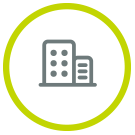
Industries We Build Hierarchical Agents For
AI agents built to address specific needs of organizations everywhere.
We tailor fit AI agents to address the specific needs, pain points, and processes for the following industries.

Our AI Agents Speak For Themselves
But so do our clients.

Logan Gerber – Marketing Director at NFL Foundation
“Orases successfully built efficiencies into our prototype and delivered a high-quality platform.”

Matt Owings – President at Next Day Dumpsters
“They’re honorable, reputable, and easy to work with. They genuinely care about the outcome and want to do a good job.”

Donald J. Roy, Jr., CPA – Executive Vice President at American Kidney Fund
“Orases built a platform that’s boosted productivity by about 30%.”

Torey Carter-Conneen – Chief Operating Officer at American Immigration Lawyers Association
“Not only do they want to succeed, they strive to produce functionally and visually unique software.”

Common Questions About Hierarchical AI Agents
Answers to the questions that’s been on everyone’s mind.
How Does A Hierarchical AI Agent Work?
Hierarchical AIs have an organizational structure with supervisory/manager agents setting goals and subordinate agents executing specialized tasks. Information flows up and down to coordinate.
What Makes Hierarchical AI Different From Goal-Based AI?
While goal-based AIs focus on fulfilling objectives, hierarchical AIs incorporate additional oversight and coordination mechanisms for managing interconnected sub-goals.
What Are The Business Benefits Of Hierarchical AI?
Hierarchical AI structures enhance complex workflow orchestration, driving efficiency, quality, and speed gains across operations from manufacturing to supply chain.
Can Hierarchical AI Be Applied To My Industry?
The modular, scalable nature of hierarchical AI makes it flexible adaptable to diverse settings from precision agriculture to financial auditing and more.
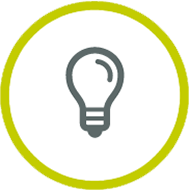
Featured Insights
Take a deeper dive into the world of possibilities AI agent development services offer.

AI In Healthcare: Predictive, Personalized, Preventive Care
AI in healthcare has the potential to transform the medical landscape into a more efficient, humane, and customized system.

The Modern Think Tank: Leveraging AI For Organizational Growth And Innovation
Artificial intelligence has the power to reshape business models, with AI’s broad range of applications, businesses will see an impact.

Related AI Services
We’ve got everything you need.




